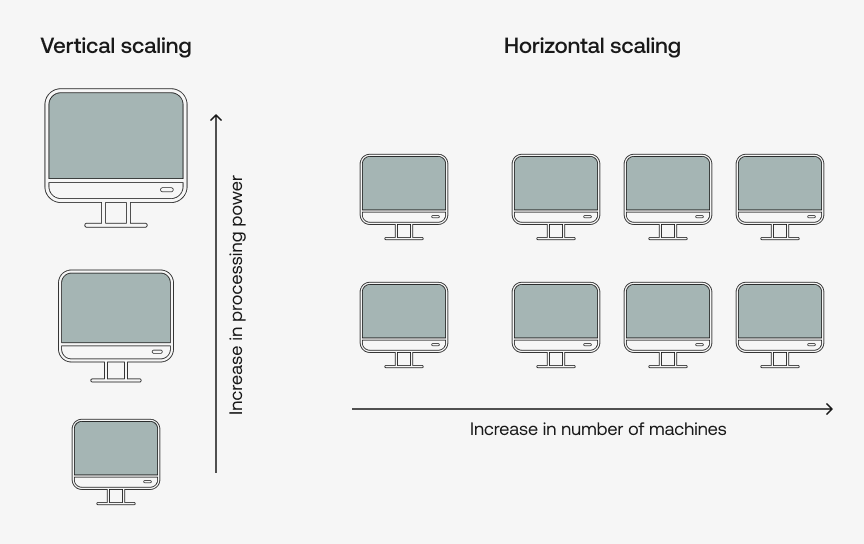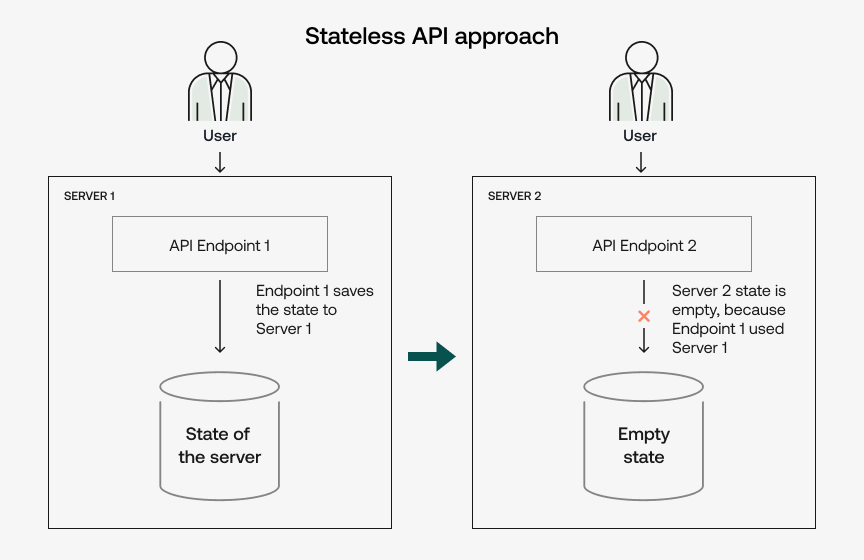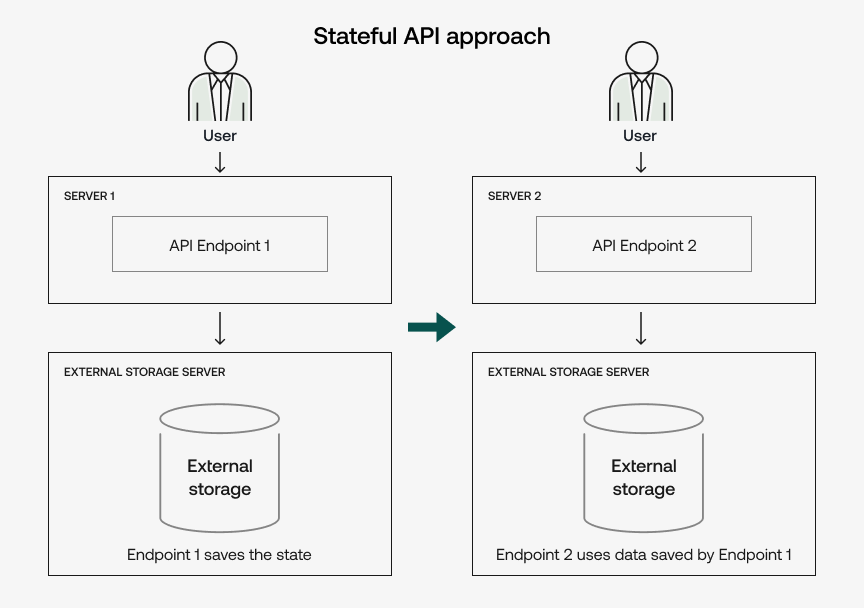I guess each and every unmarried entrepreneur has scalability at the record as they plan their long run app. Regardless of the trade objectives in thoughts, everybody would be at liberty to get a strong app that survives Black Friday with out a trace of a glitch.
Good day, I’m Alex Shumski, Head of Presales at Symfa. As far as development device architectures is what I’ve been doing for a dwelling for years and years, I’m right here to signify a factor or two to people who aren’t sure if they want app scaling in any respect and which approach to practice, if any.
Yeah, I utterly notice that necessities fluctuate inside each and every trade case. Some want a high-load app with an eye fixed to explosive endeavor and consumer call for enlargement. Others don’t precisely plan app extensions any time quickly however go for tough scalability on the engineering level, as they imagine that bettering it later would hit their wallets badly.
From a big point of view, will have to any roughly app upward push to the scalability problem? If we do it early on whilst simply beginning cell or internet app building, does this save price range? Now, let’s get technical immediately.
Software Scalability: What Is It Even About?
For starters, terminology. Necessarily, scalability implies a gadget’s enlargement capability, most commonly in relation to dealing with expanding consumer requests and repair call for. It in particular friends the backend, website hosting servers, and databases. To reinforce your app’s bandwidth, you’ll go for the 2 following approaches:

Scale-up or Vertical Scaling
That is actually about expanding your gadget’s sources. Which means ahead of scaling, it applied an 8-core device with 4GB reminiscence; it will have to transfer to a more potent device having 8 cores and 8GB reminiscence. So, in relation to vertical scaling, we’re speaking about bettering completely the capability of the server your app runs on.
Scale-Out or Horizontal Scaling
This one isn’t almost about scaling the sources in position however getting extra machines. Say your server powers a unmarried device. In time, with the weight enlargement, you’re going to copy the device having equivalent provider whilst balancing the weight.
The excellent news is that almost all programs are tailored to enhance the scale-out. It’s simply that load balancing might turn into a problem because of the emergence of standing tracking, along side endpoints and backend group rules. However those too can lend a hand handle the issue.
As implemented to the backend, a pleasant means out is stateless API: because the server receives a request, its state doesn’t exchange, identical to with any of the next ones. What I’m announcing is that if a REST-enabled backend is stateless, each and every name is totally impartial. That means it incorporates all of the records required to successfully deal with it on itself, with out the usage of consultation or hidden records whilst processing requests.
This manner, you’ll stay any roughly knowledge (referred to as state) out of the server in order that nobody can get entry to the primary request thru the second, and so forth. In a phrase, the stateless means facilitates balancing. Regardless of what number of dependencies your app holds, it gained’t be a large deal for you.


Why precisely is that this essential? The article is, a number of requests made through one and the similar consumer might pass to disparate servers. Which means to save lots of the state, the gadget is to stay it in a short lived hyperlink.
Take a purchase order request with consumer records inside of. Previous to main a consumer to a devoted fee web page dealing with a specific request, the gadget is to save lots of their main points somewhere. To carry the intervening time records, we will succeed in out to databases and garage like Redis cache or Azure Blob Garage. If your app isn’t stateless however stateful, you’ll configure the Load Balancer and consumer consultation ID in order that it sends one consumer request to 1 server.
Talking about scaling strategies and equipment, we will have to first dig just a little into the 2 issues they maximum rely at the software sort and the deployment type.
Software Kind
Whilst opting for a scaling method to practice, one will have to imagine what sits neatly with their app sort and its elements — which one handles the easiest load? On this regard, we differentiate:
- CPU-intensive apps with high-loaded processor capability;
- Information-rich apps with huge knowledge turnaround aching for database scaling;
- Community-intensive apps rely on community capacities.
Deployment Type
Relying on what sort of cases your app runs on (might be digital machines or Amazon EC2), you’ll go for the NGINX load balancer or Apache Zookeeper equipment living on a devoted device to observe the device load.
Certain, duties in the back of any app fluctuate, however there are dependable services and products to deal with static content material scaling — say, CDN CloudFront. Then, you’ll use the balancer to additional configure scaling routines inside each and every Amazon infrastructure provider.
Consider you’re searching for vertical scalability. By using EC2, you’ll identify that the cases may also be introduced with D2 huge or D2XXL, instead of D2 micro useful resource subscription. Differently, in circumstances when the weight breaks a specified prohibit, there are additional cases to be had. Like, it seems that your gadget is some distance too CPU-intensive for 80%, so that you deploy further cases, and not one of the capability will get wrecked.
Final Concerns Whilst Deciding on App Scaling Methods
Once more, inside Symfa’s observe, many purchasers desire a completely scalable app from the outset as they concern long run overspending. I’d say, generally, that is simply in part true. As I see it, within the first position, there’s a lot more sense to find out if the call for for your app is THAT excessive after which detecting the elements which are going to fight with essentially the most extensive load.
So, it might probably all boil right down to the next questions:
Do the Scalability Problems Display?
Rather than risking scaling investments with out even an indication of long run issues, one will have to higher make are living data-driven selections concerning the scope of scaling measures to take.
Consider you might be development an app whilst expecting it to be network-intensive. But, it is going are living — and whoop, it’s CPU-intensive as an alternative. Nonetheless, this type of scalability problem isn’t that massive a deal. You pass to the AWS infrastructure, exchange example sorts, and also you’re accomplished with it. And it’s means inexpensive than bringing adjustments to all the app structure.
Does Scaling Pay Its Cash’s Price?
Your app’s complexity all the time counts as you intend to scale. Say you’re a startup. You’re engineering an app with a fairly small codebase, which takes one to 2 years. Right here, scaling doesn’t generally tend to make a hollow for your price range — you’ll transfer to the microservices structure below affordable prices, thus enabling each and every of your services and products to additional scale proportionally.
Any other case. You’ve got about part a 12 months of building forward when there comes a decision for scaling. And you realize what? It even simplifies the problem. Granted, your app nonetheless hosts little common sense and dependencies whilst having a small database, however splitting it into microservices is lovely potential.
Differently, you’ll transfer the hurdled elements to efficient supplier answers. If it’s the database that’s bothered, chances are you’ll go for a Database-as-a-Provider software whilst delegating scaling to, say, the AWS infrastructure. Notice: right here, I’d once more counsel a detailed revision of your app’s trade objectives, as website hosting services and products have their specifics. That is precisely the case whilst you may call to mind a reputedly reasonable means against app scalability, however truth crashes it.
A easy instance. You’ve got a network- and CPU-intensive app for video processing, on-line streaming, and information manufacturing. My piece of recommendation here’s: to keep away from over the top website hosting bills, you’d fairly construct a devoted records middle to deal with the weight whilst leaving simply the content material distribution routines within the Cloud.
Keeping a unique position at the scaling record, subtle legacy packages. The article is, monolith programs is usually a combination of big dependencies, common sense, and databases, which makes it no more straightforward to scale. Nonetheless, it’s now not unimaginable.
In case the app runs on an inner records middle, we will have to follow the “elevate and shift” means whilst migrating the entire app infrastructure to the Cloud. Thus, vertical scaling wins us a while and sources to fortify the portions which are used to tug the applying structure in the back of.
Some Last Tips
Once more, all the time take into accout that you’ll’t stroll in any person’s footwear on the subject of scaling. There is a legacy monolith, and there’s a undeniable simplicity of a new child app with minimal dependencies — no silver bullet is appropriate. It is all about your app’s trade goals and, maximum in particular, elements and communications. So, first, take your time to verify your app’s going to be high-load and be expecting some potential scalability problems to emerge in your horizon.